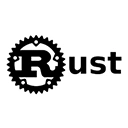An iterator in Rust is a powerful abstraction that allows you to traverse a collection of items, such as arrays, vectors, or other data structures, without exposing the underlying implementation details. Iterators provide a way to access elements sequentially and come with a variety of methods for processing data efficiently.
1. What is an Iterator?
In Rust, an iterator is any type that implements the Iterator trait. This trait requires the implementation of the next method, which returns the next item in the sequence wrapped in an Option. When there are no more items to return, next returns None.
Example of a Simple Iterator
fn main() {
let numbers = vec![1, 2, 3, 4, 5];
let mut iter = numbers.iter(); // Create an iterator over the vector
// Using the next method to access elements
while let Some(&number) = iter.next() {
println!("{}", number);
}
}
Explanation of the Example
- In this example, we create a vector named
numberscontaining five integers. - We call the
itermethod on the vector to create an iterator over its elements. - We use a
while letloop to repeatedly call thenextmethod on the iterator, which returns the next element wrapped inSome. - When there are no more elements,
nextreturnsNone, and the loop terminates.
2. Using Iterator Methods
Rust's iterators come with a variety of methods that allow you to transform, filter, and collect data efficiently. Some common iterator methods include map, filter, and collect.
Example of Using Iterator Methods
fn main() {
let numbers = vec![1, 2, 3, 4, 5];
// Using map to create a new iterator with squared values
let squared: Vec<i32> = numbers.iter()
.map(|&x| x * x) // Square each element
.collect(); // Collect the results into a new vector
println!("Squared numbers: {:?}", squared);
}
</i32>Explanation of the Example
- In this example, we create a vector named
numberscontaining five integers. - We call the
itermethod to create an iterator over the vector. - We use the
mapmethod to apply a transformation to each element, squaring it in this case. - The
collectmethod is then used to gather the results into a new vector namedsquared. - Finally, we print the squared numbers.
3. Chaining Iterator Methods
One of the powerful features of iterators in Rust is the ability to chain multiple iterator methods together. This allows for concise and expressive data processing pipelines.
Example of Chaining Iterator Methods
fn main() {
let numbers = vec![1, 2, 3, 4, 5, 6];
// Chaining methods to filter and square even numbers
let even_squares: Vec<i32> = numbers.iter()
.filter(|&&x| x % 2 == 0) // Keep only even numbers
.map(|&x| x * x) // Square the even numbers
.collect(); // Collect the results into a new vector
println!("Even squares: {:?}", even_squares);
}
</i32>Explanation of the Example
- In this example, we create a vector named
numberscontaining six integers. - We chain the
filtermethod to keep only even numbers from the vector. - Next, we chain the
mapmethod to square the filtered even numbers. - Finally, we use
collectto gather the results into a new vector namedeven_squares. - We print the resulting vector of even squares.
4. Conclusion
Iterators in Rust provide a powerful and flexible way to work with collections. By implementing the Iterator trait, they allow for efficient traversal and manipulation of data. With various methods available for transforming and filtering data, iterators enable concise and expressive code that enhances readability and maintainability.

